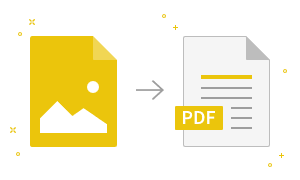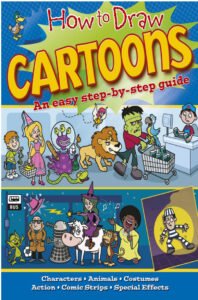Social Sciences CBSE Class 10 Novels, Society and History VSAQ
Q.1. What is a novel ?
Ans. Novel is a modern form of literature born from print, a mechanical invention.
Q.2. What are major differences between a novel and a manuscript ?
Ans: (i) Novel is born from print whereas manuscript is handwritten.
(ii) Manuscripts were difficult to prepare and there were only few readers whereas novels are easy to print and are widely read.
Q-3. Name the countries where the novel first took firm roots. [CBSE 2009 (o)]
Ans. The novel first took firm root in England and France.
Q.4. Who formed the readership for the novels ?
Ans. New groups of lower-middle-class people such as shopkeepers, clerks, aristocrats and gentlemanly classes formed the new readership for the novels.
Q.5. Who was another of Pamela a novel based on exchange of letters between two lovers.
Ans. Samuel Richardson.
Q.6. What was impact of serialisation of a novel ?
Ans. It allowed readers to relish the suspense, discuss the character of a novel and live for weeks with its story.
Q.7. Who was the author of Pickwick Papers which was serialised in 1836 ? [CBSE 2014]
Ans. Charles Dickens.
Q-8. Name a novelist who has written about terrible effects of industrialisation on people’s lives and character.
Ans. Charles Dickens.
Q.9- Name any two most important novels written by Charles Dickens. What was the theme of the novels ?
Ans: (i) Hard Times (ii) Oliver Twist.
In both the novels, Dickens had written about the terrible effects of industrialisation on people’s lives and character.
Q.10. Identify the person given in the image.
Ans. Leo Tolstoy.
Q.11. Who is the writer of the Novel Germinal ? What was the theme of the novel ?
Ans. Emile Zola, the French novelist wrote Germinal (1885). The novel is on the life of a young coalminer. In the novel, the writer tried his best to explain the harsh conditions under which the miners worked. It ends on a note of despair : the strike the hero leads fails, his coworkers turn against him and hopes are shattered.
Q.12. Name a novelist who wrote about traditional rural communities of England that were vanishing.
Ans. Thomas Hardy.
Q.13. How most of the novels of the 19th century represented the true picture of the community and the society ?
Ans. (i) In the 19th century, Europe entered the industrial age. Novelists such as Charles Dickens and Emile Zola wrote about the terrible effects of industrialisation on peoples lives and character.
(ii) British novelist Thomas Hardy wrote about traditional rural communities of England that were fast vanishing.
Q.14. Who was the author of Mayor of Casterbridge ?
Ans. Thomas Hardy.
Q.15. Who was Leo Tolstoy?
Ans. He was a famous Russian novelist who wrote extensively on rural life and community.
Q.16. Which novel supplied the adventurous text for the young English population ? [CBSE 2014]
Ans. Under Drake’s Flag by G.A. Henty.
Q.17. What was the theme of the novel Jane Eyre written by Charlotte Bronte?
Ans.He has shown the main character i.e. Jane as independent and assertive while girls of her time were expected to be quiet and well behaved.
Q.18. “It is a truth universally accepted acknowledged, that a single man in possession of a good fortune, must be in want of a wife”. Name the novel and the author.
Ans. Pride and Prejudice-Jane Austen.
Q-19. Name some important novelists who use to write for the young generation.
Or
Name some of the important novels for the young. [CBSE 2014]
Ans. (i) R.L. Stevenson – Treasure Island
(ii) Rudyard Kipling – Jungle Book
(iii) Helen Hunt – Ramona
(iv) Sarah Chauncey Woolsey – What Katy Did
Q.20. Who is the author of the novel “Robinson Crusoe ?
Ans. Daniel Defoe.
Q.21. Name the novelist who showed the darker ‘ side of colonial occupation.
Ans. Joseph Conrad.
Q.22. Who were the author’s of the following novels ?
Ans. (i) Yamuna Paryatan
(ii) Muktamala Ans. (i) Baba Radmaji’s
(ii) Lakshman Moreshwar Halbe
Q.23. Which was the first modern novel in Nalayalam ? [CBSE 2014]
Ans. Indulekha.
Q.24. Which was the first proper modem Hindi novel? Who was its author ?
Ans. The first proper modern Hindi novel was Pariksha Guru. It was written by Srinivas Das in 1882.
Q.25. Who is known as the pioneer of modem Hindi literature ?
Ans. Bharatendu Harishchandra.
Q.26. Who was the author of Pariksha Guru ?
Ans. Srinivas Das.
Q.27. How did the vernacular novels help Britishers to expand their rule in India ?
Ans. Novels provided valuable information to the colonial administrators regarding native life and customs.
Q.28. Name any two novelists of South India. Also mention the names of the novels written by them.
Ans. (i) Chandu Menon – Indulekha
(ii) Kandukuri Viresalingam-Rajasekhara Caritamu.
Q.29. Name any two famous Hindi novelists. Also mention the names of the novels written by them.
Ans. (i) Srinivas Das – Pariksha Guru
(ii) Devaki Nandan Khetri – Chandrakanta
Q.30.Name the Mala novelist who tried to translate an English novel called Henrietta Temple.
Ans. Chandu Menon.
Q.31.Which was the first modem novel in Malayalam? When was it published ?
Ans. Indulekha published in 1889 was the first modem novel in Malayalam.
Q.32.Who is the author of the novel ‘Sewasadan’? What is the importance of the novel for the Hindi literature ?
Ans. Sewasadan was written by Munshi Premchand. The novel lifted the Hindi novel from the realm of fantasy, moralising and simple entertainment to a serious reflection on the lives of ordinary people and social issues.
Q.33.How was the sources of entertainment of the old merchant elite of Calcutta different from the new bhadralok ?
Ans. The old merchant elite of Calcutta patronised public forms of entertainment such as Kabirlarai, musical soirees and dance performances whereas new bhadraloks found himself at home in the more private world of reading novels.
Q.34.‘During the 19th century, the early Bengali novelists lived in two worlds’. Explain.
Ans . (i) These were novelists who were located in the past, their characters, events and love stories based on historical events.
(ii) This group of novelists depicted the inner world of domestic life in contemporary settings. Domestic novels frequently dealt with the social problems and romantic relationships between men and women.
Q.35.‘In many novels written during the colonial period, the ideal person successfully deals with one of the central dilemmas faced by colonial subject’. What was the dilemma ?
Ans. How to be modem without rejecting traditions, how to accept ideas coming from the West without losing one’s identity.
Q.36. Who was Rokeya Hossein ?
Ans. Rokeya Hossien (1880-1932) was a reformer who, after she was widowed, started a girl’s school in Calcutta. She wrote a satiric fantasy in English called Sultana’s Dream (1905) which shows a topsyturvy world in which women take the place of men. Her novel Padmarag also showed the need for women to reform their condition by their own actions.
Q.37. Name some novelists who have written about caste practices.
Ans. (i) Potheri Kunjambu – Saraswativijayam
(ii) Advaita Malla Burman’s- Titash Ekti Nadir Naam.
Q.38. Name a novelist who wrote for lower- castes.
Ans. Potheri Kunjambu.
Q.39. ‘The Novel is about an epic about the Mallas, a community of fisherfolk who live off fishing in the river Titash. Identify the novel and the author.
Ans. Titash Ekti Nadir Naam-Advaita Malla.
Q.40. Which was the first historical novel written in Bengal ?
Ans. Bhadeb Mukhopadhyay’s Anguriya Binimoy.
Q.41. Name a novel which is about a secret Hindu militia that fights Muslims to establish a Hindu Kingdom. It was a novel that inspired many kinds of freedom fighters. ‘
Ans. Bankim’s Anandamath.
Q.42. How novels helped in popularising the sense of belonging to a common nation ?
Ans. (i) Imaging a heroic past.
(ii) Various classes were included so that they could be seen to belong to a shared world.
Q.43. Name any two novels written by Munshi Premchand. [CBSE 2014]
Ans. (i) Rangbhoomi (ii) Godan
Q.44. Why the novel Pariksha Guru could not win many readers ?
Ans. It could not win many readers, as it was perhaps too moralising in its style.
Q.45., Which was the first proper modem novel in Hindi ? What was its theme ?
Ans. Pariksha Guru was the first proper modern novel in Hindi. The novel reflects the inner and outer world of the newly emerging middle class which is caught in the difficulty of adapting to colonised society and at the same time preserving their cultural identify.
Q.46. Who was the Hindi novelist whose writing took the Hindi novels to excellence ?
Ans. Munshi Premchand.
Q.47. Which was the first novel of Bankim Chandra Chattopadhyay ?
Ans. Durgeshnandini in 1865.
Q.48. What is satire ? Give one example. [CBSE 2014]
Ans. A form of representation through writing, drawing, painting, etc. that provides a criticism of society in a manner that is witty and clever. For example, Sultana’s Dream by Rokeya Hossein.
Q.49. Who wrote Saraswativijayam ? [CBSE 2014]
Ans. Potheri Kunjambu.
Q.50. What was the theme of Saraswativijayam ?
Ans. Saraswativijayam stresses the importance of education for the upliftment of the lower caste.
Q.51. Who was the English author who showed the darker side of colonialism in his novels ? [CBSE. Sept.2011]
Ans. Joseph Conard.
Q.52. Who wrote Anandmath ? [CBSE 2014]
Ans. Bankim Chandra Chattopadhyay.
Q.53. The novel revolves around Surdas who is visually impaired and belongs to an untouchable caste. Identify the novel.
Ans. Rangbhoomi.
Q.54. The novel is an epic of the Indian peasantry and tells the moving story of Hori and his wife, Dhania. Identify the novel. [CBSE. Sept. 2011]
Ans. Godan.
Q.55. Who is the author of the novel ‘Robinson Crusoe’ ? [CBSE. Sept.2011, 12]
Ans. Daniel Defoe.
Q.56. Which of the following novel was written by Potheri Kunjambu and deals with the caste oppression ? [CBSE. Sept. 2011,12]
Ans. Saraswativijayam.

